Any videogame player with the most minimal creative inclinations has wondered if they’d be able to create a game without knowing anything about programming. The answer to this question is a little tricky. Although you need to have a bare minimum understanding of math and algorithms to get started with these types of projects, there are many tools to make the development much easier, to the point that it’s unnecessary to even touch a key. In case of Android in particular, there are tons of SDKs (software development kits) that let you create your games from scratch without having to pay any special attention to the technical intricacies. Here are some of the most used options.
When it comes to choosing an SDK, the main decision to make between the different development environments depends on the need to program or not. There are apps that let you do practically all the work using only drag and drop gestures on the screen, but in the end, it’s practically essential to complete some of these tasks “manually” through some scripting language when you need to add more complex features. That’s why we’ve decided to separate the environments into two groups: one with programs for beginners where you barely have to program, and the other for experts where it’s necessary to know at least some language before jumping into action.
This post is constantly being updated!

Game Maker Studio 2
Game Maker is an old friend in the development of apps for newbies thanks to the extreme simplicity of its environment. It wins out for its complexity that varies according to how much you want to get into GML, its own scripting language. That said, you can create your game using a simple drag and drop interface and with the help of tons of tutorials you can find online.
In terms of creating specifically for Android, the program relies on the installation of components from Android Studio (which you’ll have to install externally), as well as the exportation of your APK or the integration of ads with AdMob. Although there are no automatic exportation assistants, with the amount of documentation that exists, it’s more than enough to create your game by following certain guidelines in terms of the touch control system and integration of external services.
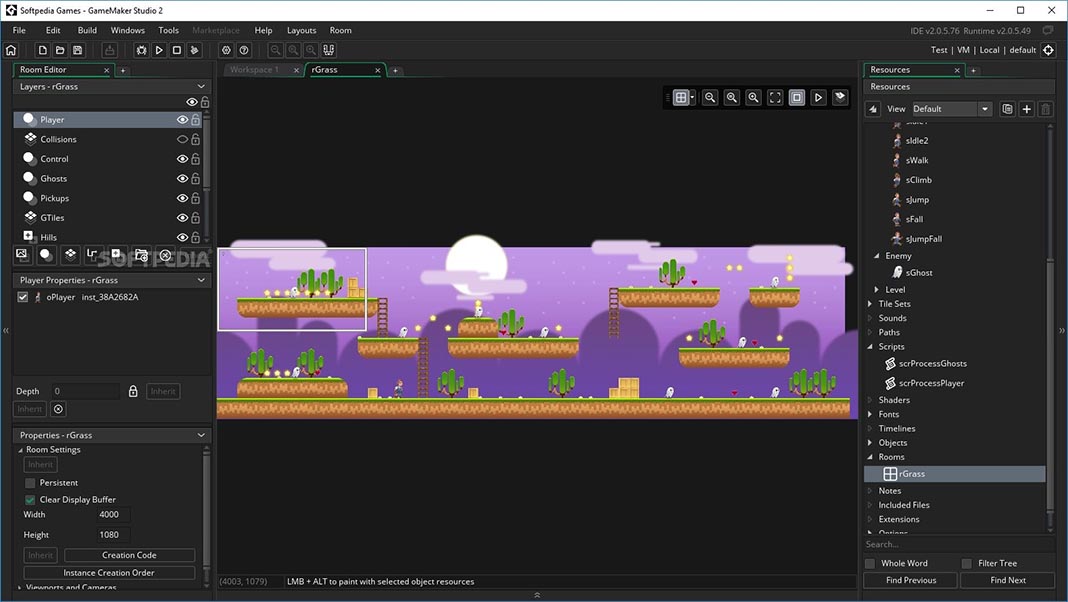
Stencyl
- Official website: http://www.stencyl.com/
- Platforms: Windows, Mac
- Type of games: 2D games (although it is possible to develop very simple 3D games)
- Price: $199 per year
This tool does its best to make sure you don’t have to program anything (even if you want to create complex developments) thanks to its completely visual representation in pseudocode. This philosophy lets you drag modules to create all sorts of structures to build your game visually. So you only have to see the implementation of what you’ve created in the base scripting language if you want to.
The Pro version uses an annual subscription system that will let you export both for Android and iOS, also integrating support to add ads through various extensions or in-app purchases. Games like Duke Dashington and Heart Star are created using Stencyl.
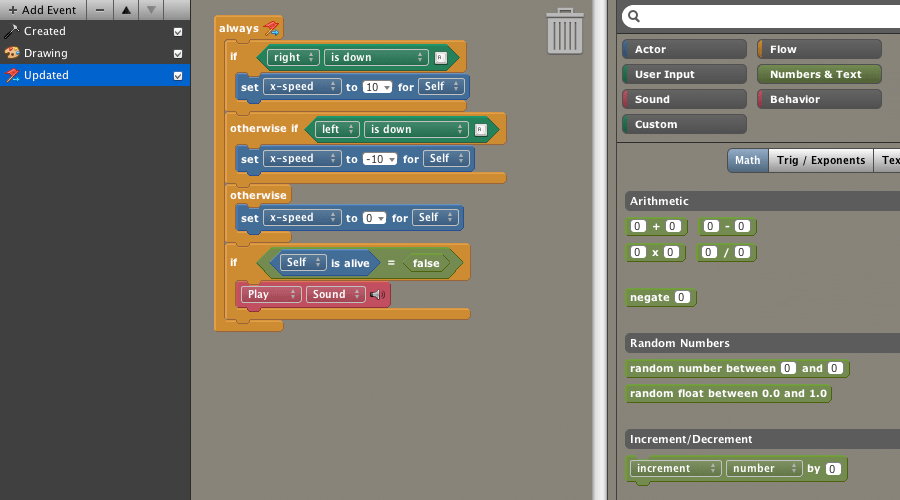
GDevelop
We would consider GDevelop to be a game editor that uses drag & drop methods as its bare minimum. You select objects, drag them on the screen, and assign them certain properties and behaviors from the different options available. Also, it offers its own image and tilesets editor. Other tools mentioned like Game Maker and Stencyl include these features too, but GDevelop is an SDK that’s simplified to the extreme. And best of all, it’s completely free.
For all these reasons, GDevelop may be a little too simple, and that’s why it’s good for creating simple action games, platformers, and puzzles, but you won’t find many free alternatives that include such a great visual environment for developing.
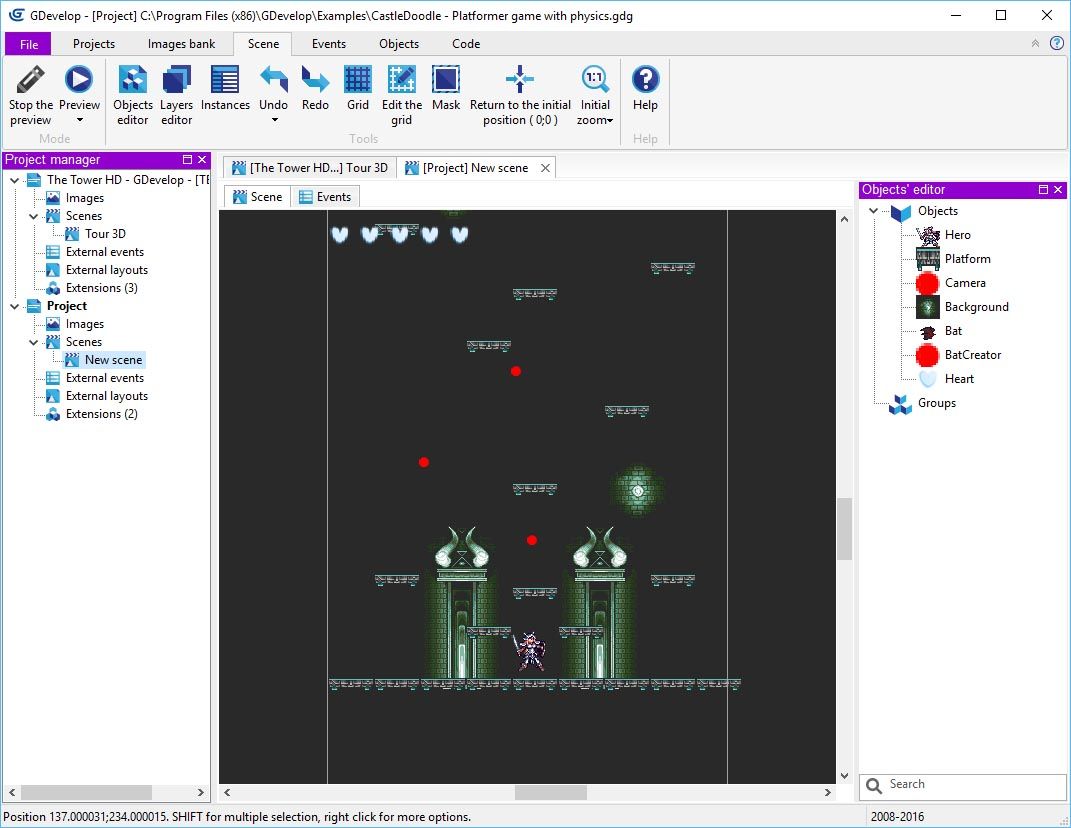
Another one of the leading app development programs that doesn’t require programming knowledge. In 2017 it made a big leap when it went from Construct 2 to Construct 3. Its emphasis on maintaining its beginner profile is so extreme that it took eight years to add support for JavaScript programming to satisfy the demands of more advanced users. That said, it’s very different, maintaining a simple but interesting visual paradigm based on events and triggers.
One of the most interesting features is that it can work as an online tool directly from the browser and save your projects in the cloud. This means you can work with it on practically any device. Plus, it includes support for ad integration and it’s even compatible with Facebook Instant Games. This is because the projects are exported in HTML5, which makes the exportation and manipulation of projects incredibly versatile.
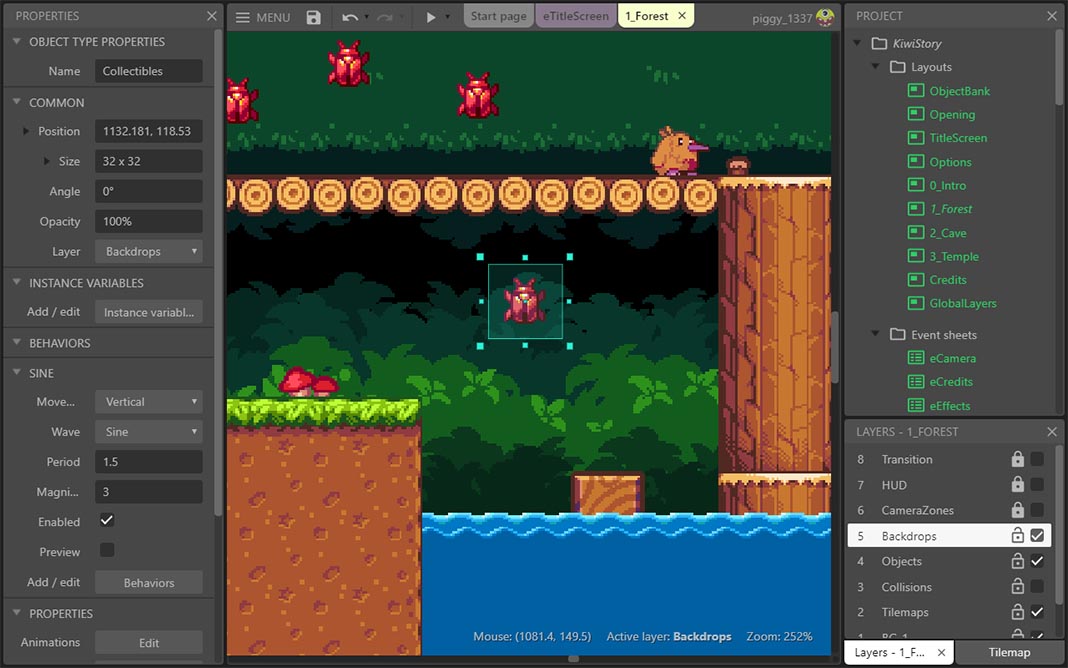
Corona 2D
- Platforms: Windows, Mac
- Type of games: 2D games
- Price: Free
The legendary Corona 2D could be a good starting point, not only because it’s completely free to use, but because it’s based on the compact scripting language Lua which can be a phenomenal introduction to getting started with programming. That said, in this case, it’s not an integrated development environment, so you’ll write raw code next to the project preview window without any additional help.
Beyond that, this is an Open Source environment with its own resource store and a community of users and support that has a few years under its belt now. Even so, it’s very active, as we can see with the recent support for 64-bit apps, a requirement for following the latest changes imposed by Google.
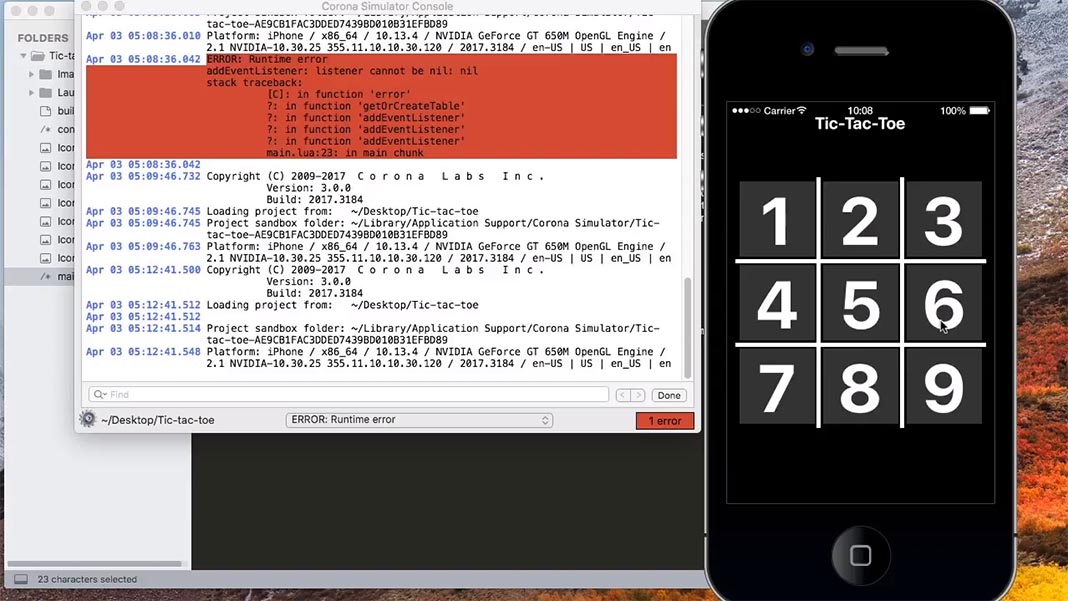
Unity 3D
- Platforms: Windows, Mac
- Type of games: All types of games
- Price: Free, or $125 per month if profits surpass $800.
Without a doubt, this is the most well-known and used option. Currently, over half of the games published on Android are created using this familiar cross-platform development environment with an enormous community and support. The best thing about it, in addition to its versatility when it comes to creating both 2D and 3D games for any genre, is that it’s free for amateur creators. In fact, you’ll only have to pay for the Pro version if you earn more than $100,000 dollars for your work.
The possibilities and compatibility with other external tools is enormous, letting you import models and resources from Blender, 3ds Max, Maya, and ZBrush, just to name a few. Plus, the programming language it uses is C#, so in the case of Unity 3D, you’ll need to know how to program in order to make your creations. That said, thanks to its asset acquisition system, you can import all sorts of elements to your game, like models and music.
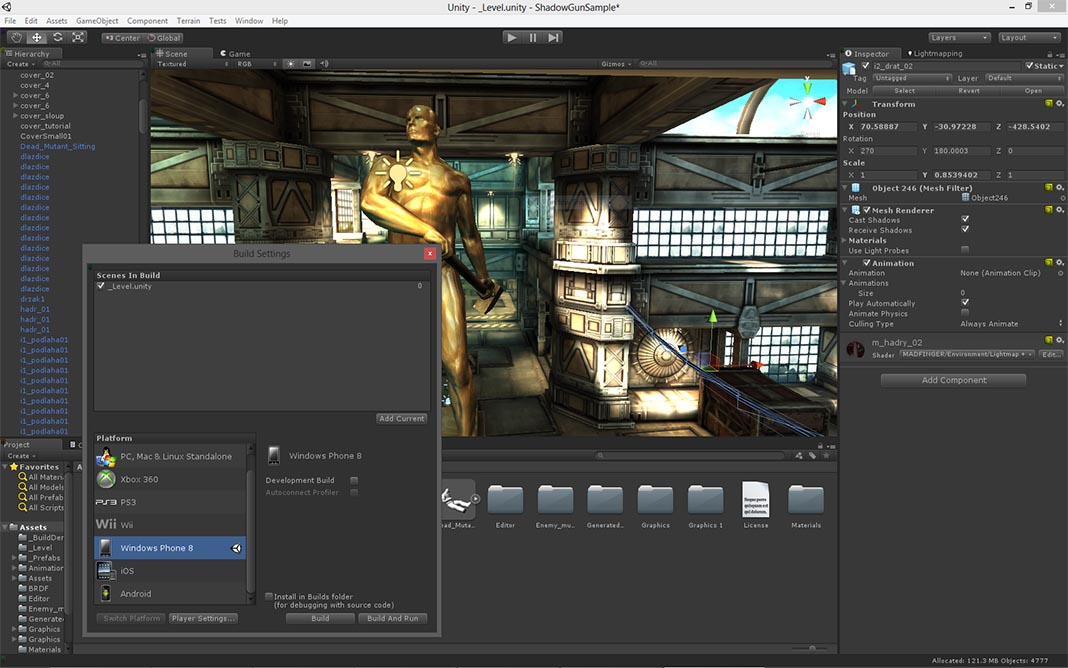
Unreal Engine
- Official website: https://www.unrealengine.com
- Platforms: Windows, Mac, Linux
- Type of games: 3D games
- Price: Free, but if you earn $3,000+ in profits, Epic gets 5%
The engine developed by Epic Games is another one of the big ones used by countless commercial videogames. Yes, obviously Fortnite is one of them. The really surprising thing about Unreal Engine is that, even though it’s an editor that’s completely centered around creating 3D games, it’s relatively possible to create complex developments without hardly touching code. This is possible thanks to a visual system of events where you’ll apply properties to the objects from endless preset templates that will orient you during the creation process.
Just like what happens with other SDKs on the list, this one lets you get audiovisual recourse through its own asset store, along with countless compatible importation formats. When you add in the fact that it’s free to use (that is, until you end up making bank off of your creation), and the enormous community of developers and documentation available, what you find is a really great tool.


No comments:
Post a Comment